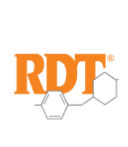|
|
|
|
|
非在研适应症- |
最高研发阶段批准上市 |
|
首次获批日期2011-08-03 |
Open Label, Confirmatory, Controlled Clinical Study of Alacramyn® in Pediatric Patients With Scorpion Sting Envenomation
There is no FDA approved therapy for the treatment of scorpion envenomation. Centruroides scorpion envenomation produces a pattern of neurotoxicity with a spectrum of severity ranging from trivial to life threatening. Patients stung by Centruroides scorpions develop a clinical syndrome which may require sedation with benzodiazepines and observation for 6 to 28 hours of intensive care monitoring. A safe therapy is necessary to halt the progression of symptoms early in the clinical course while avoiding the clinical deterioration that can occur en route to a tertiary facility. Alacramyn® is anticipated to be safer and more effective than the present standard of care, midazolam, and faster-acting thus eliminating the need to transport most rural patients and reducing hospitalization time.
100 项与 Scorpion venoms 相关的临床结果
100 项与 Scorpion venoms 相关的转化医学
0 项与 Scorpion venoms 相关的专利(医药)

